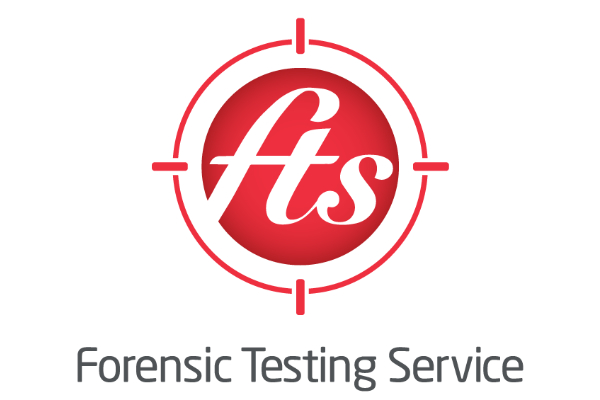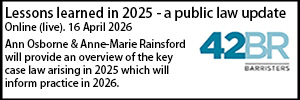The role of hair strand testing
- Details
“Hairstrand testing has its limitations.” So why are drug tests not always treated this way in the Family Court? Stephen Williams looks at the issues.
In a previous article (‘Why don’t facts always seem to matter?’) I sought to emphasise how a provable factual basis is sometimes lost within the maelstrom of other issues within both public and private law cases. Within the article I noted that this issue particularly applies when it comes to drug testing, but that it was a bigger issue than I could do justice to within a short section of that article.
This article therefore will seek to expand upon the issue, particularly considering the reminder of the issue by the Court of Appeal in Re D [2024] EWCA Civ 498.
What is the issue?
Hairstrand testing for prescribed and non-prescribed drugs has been a feature of decision making in the family court for many years. It is particularly important within the FDAC courts and some single issue cases, where the outcome of a set of proceedings can seemingly hang upon the outcome of drug testing. There is no issue when the outcome of the testing is accepted by the subject, however when the validity of the test results is drawn into question a greater focus needs to be had on the underlying science and reliability of the test results.
As I emphasised within my previous article, the results of tests should not automatically be accepted by the court. They remain a part of the evidence upon which the court can be invited to make factual findings. The mere presence of an ostensibly positive hair strand test does not reverse the burden of proof, which remains upon the local authority (or anyone else seeking to rely upon the use of drugs) to prove on the balance of probabilities. On the binary nature of such matters, if they can’t be proven to the requisite standard then there hasn’t been drug misuse.
Reported cases
There are three particularly useful cases where the High Court and CoA have considered the validity of drug testing and are recommended reading for all practitioners within this area. These are:
- Mr Justice Hayden in London Borough of Islington v M and another [2017] EWHC 364 (Fam)
- Mr Justice Jackson (as he then was) in Re H (A Child: Hair Strand Testing) [2017] EWFC 64
- Mr Justice Cobb and Lord Justice Jackson in Re D [2024] EWCA Civ 498
I would summarise the outcomes of these cases as being the following key points:
- The variability of findings from hair strand testing does not call into question the underlying science but emphasises the need to treat data with proper caution.
- Hair strand drug tests cannot be viewed in isolation, separately from the wider environmental factors. Hair strand testing should never be regarded as determinative or conclusive, it is only part of the evidence before the court.
- Readers of test results should be careful to understand what is being read and not jump to a conclusion about drug or alcohol use without understanding the significance of the data and its place within the overall evidence
- That the levels of drug detected in someone’s hair is not evidence of the amount of a drug consumed by that parent.
The higher courts have not sought to dispute that testing should be undertaken, nor that it shouldn’t remain a vital element of the decision making in Family cases, however they implore professionals to better understand the limitations of the science behind the tests. Crucially we as professionals are urged to not just turn to the results page of the test results and assume what is said is gospel. However, in my experience that is all too often what still occurs within these cases.
What are the limitations?
Whilst it is inevitable that practitioners will look first at the results page of a test, the remaining 10-15 pages of any report contains considerable other information that brings into question the accuracy of the test results themselves. Those other pages often immediate undermine what are the understandable initial readings of any test by an unknowing or presumptive practitioner.
In my experience the following are the most useful limitations of drug testing to be aware of when advising parties within these types of proceedings:
- Hair testing should not be used within isolation and should be used alongside other forms of evidence: This must be the most important element to emphasise in every case. Each report says this within it, and it is the emphasis of the caselaw from the higher courts. Is there any other evidence of drug misuse within the period other than the testing results, if not then isn’t the test being used within isolation?
- Hair grows at vastly different speeds for different people: Scalp hair grows between 0.6cm and 1.4cm per month, yet for the basis of segmented testing it is assumed that an individual’s hair grows at 1cm per month. Test results describe scalp hair growth as ‘reasonably constant’. Thus, there is a variability within segmented tests of almost 50% in the first month of testing, which over a 6 month test could mean that the testing is over a much longer or indeed shorter period than is assumed.
- Only head hair can be examined sectionally – If someone does not have head hair and there is thus a reliance on other types of body hair, there cannot be a sectional analysis. Indeed, there can be no timeframe put on such body hair and it therefore just is sufficient to show whether someone has used a particular drug at some point within the growth of that hair, which could be many months or even years. Agencies often can put no backstop on how long the test could be over.
- It can take approximately 2 weeks for any scalp hair to appear above the scalp and be suitable for analysis – Clearly this is dependent upon the growth rate of hair, however testing can never be done on scalp hair within the previous two weeks.
- A high level result DOES NOT equate to a high usage of a particular type of drug – This is one of the most common misconceptions by professionals. Levels of drug within the hair cannot be cross referred to the level of usage by any individual due to several factors such as the purity of a drug taken, individual variations to drug metabolism and drug incorporations into hair. Some drugs even have a higher affinity for darker hair. The Society of Hair Testing does not even provide standard definitions of what a low, medium or high level is. Testing agencies derive the levels from their own personal historic results, and they differ between agencies.
- It can take several months for a drug to ‘come out’ of an individual’s system and produce a ‘not detected result’ – This is due to the understanding that at any one time 15% of scalp hair is not actively growing. This resting hair can stay on the scalp for approximately 3-4 months and sometimes up to 6 months before growing above the scalp. Therefore, it is possible that the resting hair could contain drugs that were taken in those 3-6 months prior to it emerging above the scalp. A large decrease is expected to be seen after the first month an individual stops followed by smaller decreases until the ‘not-detected’ result is seen.
- Evidence of the drug without a corresponding metabolite does not indicate use – If there is not evidence of the metabolite within the body, but there is the ‘parent drug’ then there can be no evidence that the drug has been metabolised by the body. The test may be because of passive/environmental contamination.
- There is a margin for error within any scientific test result – This is particularly relevant when the levels are close to the ‘cutoff’ level but from experience toxicologists can be specifically asked the margin for error from their laboratory for that particular drug. The margins for error are not insubstantial and if checked can mean that a result could have been from below the cut off level in any event.
- Different laboratories and different testing agencies produce different test results for the same hair samples – This is most vividly shown by the testing undertaken in Re H at paragraph 30. It is difficult (and questionable) to cross compare levels between different test results. Trends that suggest an overall decrease, but a higher level within a latter test are particularly dubious when either a different testing agency or laboratory may have been used.
- Some testing agencies produce results for which they are not accredited or validated to at the requisite standard – This applies to some of the bigger (or certainly cheaper) testing agencies. Check that there are no footnotes suggesting they are not accredited to test for that drug or the metabolite.
It is often a combination of these issues that emerge within cases or can provide an explanation for what is an objectively positive result that is denied by a parent. The most likely is a combination of numbers 1, 2 and 6 above. Whilst it might be that it takes up to 6 months for some drugs to be removed from someone’s system, how does that apply when an individual has slow hair growth? Does that mean that it takes longer for them to produce that ‘not detected’ result? Is there actually any other evidence that there has been ongoing drug use within this period, or is there a total reliance upon the test results?
What should be done?
If the subject’s instructions are that the test results are not accurate it is incumbent on professionals to challenge them based on the test results, noting that the underlying science will not be thought to be in dispute by the court. However, if their instructions remain resolute then an analysis as to how their instructions can marry up with the test results should follow. Practitioners should be able to construct legitimate and creative arguments against test results if those are the instructions of their clients.
Crucially the local authority (or other party seeking to prove the factual basis of the test results) needs to have it made abundantly clear that the outcome of the drug testing is in dispute. As per the dicta of Sir James Munby in Re A it should be made clear that its likely factual case is challenged and will need to be proven by it on the balance of probabilities. Enquiries about what other evidence may exist as to drug use is also helpful at an early stage. Importantly the local authority should be invited to set out what it is that they seek to prove factually as early as possible. Further questions to the toxicologists should also be considered. Often these will produce helpful clarifications that further emphasises the limits of the reliance on the testing.
Practitioners should also be readily able to push back against often simplistic or misinformed welfare analysis such as the following:
- Mr X has been using high levels of cocaine throughout this time period;
- Mr X has continued to use cocaine every month between August and February as the test results show levels above the cutoff in every month covered by the test;
- Mr X continues to be dishonest when he says that he has stopped using cocaine as the test results clearly show that he is consuming cocaine;
- Mr X says that he stopped using cocaine in April, however the testing in April and May shows a continued level of use until June, albeit decreasing, he has therefore been dishonest with professionals;
- Mr X says that he stopped using in April but the test results don’t show a reduction down to a not detected result.
Professionals should also be able to argue against the necessity of testing in certain situations. Arguments about ‘fishing expeditions’ are well known and articulated regularly. However, is there a necessity for testing during a likely telogen phase of hair growth going to be of assistance? Is testing in the absence of any other evidence of recent drug use going to be sufficiently reliable to be the basis of findings in the absence of any other evidence? Is testing of body hair for recent drug misuse going to be of any value?
Crucially the first thing when faced with a negative drug test is not to sigh and think ‘well this isn’t what they told me they would do’ but to objectively challenge how this drug test result actually fits in with what you have been told and push back against the likely assumption that it is always accurate.
Note of caution
By way of balance (as a regular Local Authority representative) it is important to emphasise the point made within the High Court and Court of Appeal that the underlying science is not in dispute for hair strand testing. It is also of importance to emphasise that the burden of proof within these cases is only the balance of probabilities. Whilst parents’ representatives might be able to construe the results to show a reason as to why, taken at its extremes the test results could show their client is telling the truth, is that more likely than not to be what the test results show. 6 months of resting in a telogen state is possible, but it is more likely to be 3-4 months, similarly hair growth at 1.4cm is possible but the average is lower than this.
Also, and often most powerfully these tests should only have been undertaken on individuals who have a history of drug misuse. Thus, whilst there may not be any other supporting evidence of recent drug misuse the local authority will be able to rely upon the fact that this person has historically been a user of this drug (by their own admission often) and thus it becomes more likely that this person has relapsed or continued to use an addictive substance during the course of the drug testing. Also, an individual may have a history of dishonesty which may be of relevance in making factual determinations (with the relevant Lucas direction).
Conclusion
As with my earlier article it is hoped that much of the above is well known and frequently argued by readers. However, in my experience there is a repeated and unrebutted assumption by social workers, lawyers and the judiciary that drug tests are accurate even when they are staunchly disputed by the subject. These then disputed tests are the catalyst for welfare decisions being made that are opposed on that basis.
In many cases with a proper finding based on the available evidence this is entirely justifiable, however if that finding cannot be justified (and thus proven to the requisite standard) then the welfare outcome should be different. We as practitioners need to always be sufficiently informed and robust to be able to critically challenge the evidence when it is received. Social workers and guardians should also have highlighted the likely arguments when they draft their final evidence in cases. Far too often a total lack of understanding of the limitations of drug testing is evident from a cursory read through a final SWET or CAFCASS final analysis.
It must always be remembered, ‘hairstrand testing has its limitations.’
Stephen Williams is a barrister at St Mary’s Family Law Chambers.












































